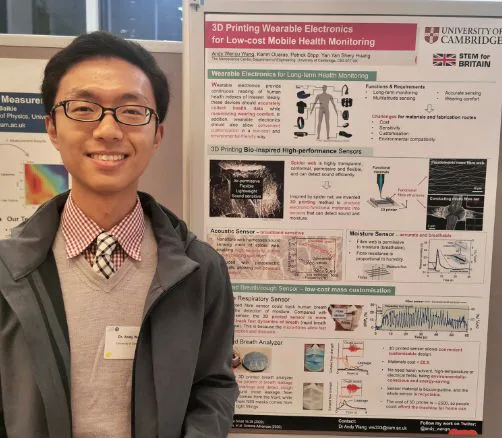
Meet Dr. Laura E. Newman, an Assistant Professor in the Department of Cell Biology at the University of Virginia School of Medicine, United States. Her research delves into the intriguing role of mitochondria—these tiny powerhouses that were once ancient bacteria now living inside our cells—as crucial regulators of cellular signaling.
With an impressive background in biotechnology, neuroscience, biochemistry, and cell and developmental biology, Dr. Newman is passionate about uncovering how these ancient organelles affect cellular responses, especially under stress. Her work is paving the way for new insights into diseases like Alzheimer’s, Parkinson’s, and diabetes, potentially leading to groundbreaking therapeutic approaches.
Join us as we explore Dr. Newman’s innovative research and take a peek into the captivating world of cell biology.
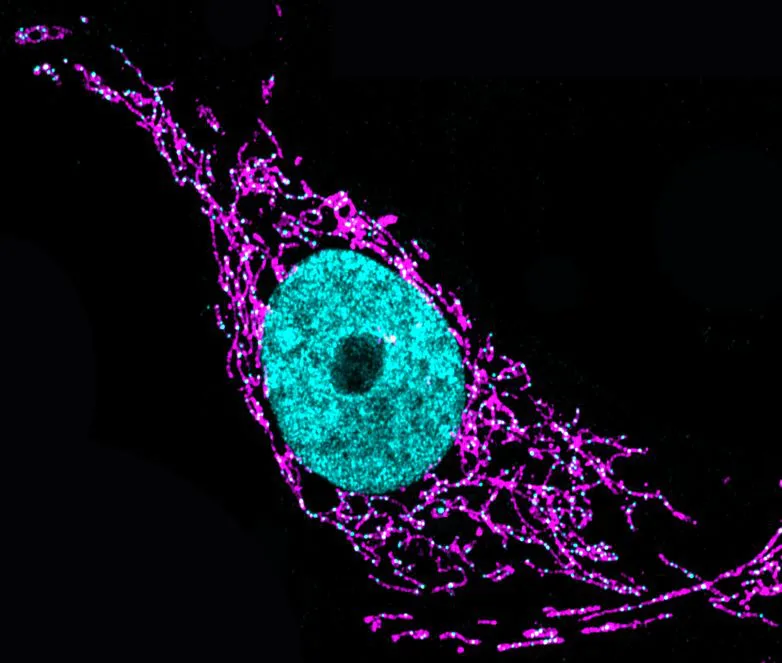
What initially sparked your interest in Cell Biology, and what motivated you to pursue it as a career?
I became interested in biology as a kid, when I learned that bacteria exist and were responsible for making me sick. But I became interested in cell biology in middle school, when I saw the diagram of a typical cell. I was surprised by how many different organelles there were, and I wanted to learn about all of the organelles and what they did.
Later, when I learned that mitochondria are basically ancient bacteria residing in all of our cells, that blew my mind, and I spent a lot of time wondering about how I am composed of cells and bacteria that are in a symbiotic relationship with each other. So I always wanted to delve deeper into that idea and understand how it was possible.
As I started working in a research lab, I fell in love with microscopy, because I got to study living cells and see these organelles (including mitochondria) that I had studied in my textbook. I learned that they are way cooler than the typical eukaryotic cell cartoon – they look cool, they move around the cell, they constantly change their shape, and they form contacts with each other in order to exchange information. All of this cemented my desire to pursue cell biology.
I’m curious to know more about the concept of an ancient bacterium (likely referring to mitochondria) embedded within the cell and how it has evolved to regulate cellular signaling?
The idea behind the endosymbiotic theory is that mitochondria originated from bacteria. As I explained above, I have always found this concept fascinating. It implies that there was some sort of symbiotic relationship between the cell and a bacterium that enabled an exchange of information, nutrients, etc.
Over time, mitochondria have evolved quite a bit to adapt to their environment within the cell. Yet they retain some features of that ancient bacterium, which gives them the ability to trigger the immune system.
I would love to understand how this symbiotic relationship evolved into the present day, how this enables mitochondria to communicate with other organelles, and how this impacts cellular function (and dysfunction/disease).
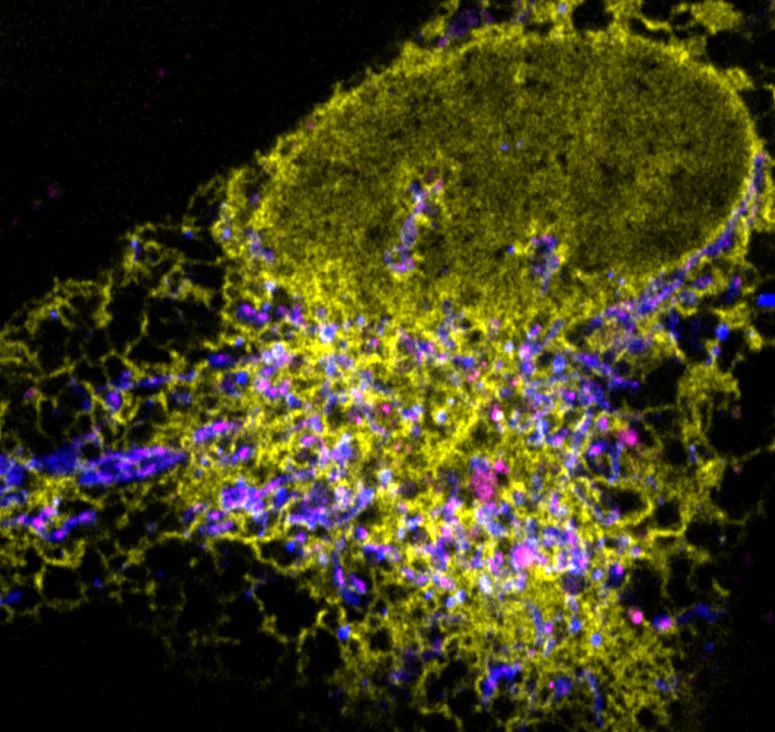
Can you explain how mtDNA, as a DAMP, contributes to both anti-viral resistance and pathogenic inflammation in various disease contexts? Ref: Mitochondrial DNA replication stress triggers
Mitochondria originated from bacteria and possess their own DNA (mitochondrial DNA or mtDNA). Under normal conditions, mitochondria use mtDNA to make the machinery that they need to generate energy. However, under stressful conditions, mtDNA can escape from mitochondria – it can escape into the cellular environment (the cytoplasm), or it can escape from the cell and make its way into the bloodstream.
When mtDNA is present outside of mitochondria, it’s recognized by the immune system, which sounds the alarm and triggers inflammation. This is a really exciting and important topic of research right now, as many scientists are finding mtDNA release and inflammatory signaling as they study many different diseases, including (but not limited to!) autoimmune diseases, neurodegenerative diseases, and cardiovascular diseases.
In many chronic diseases, this inflammation seems to be detrimental and progresses the disease. We also know that mtDNA release occurs during infection by many pathogens, including many different species of bacteria and viruses; however, during infection we think that mtDNA is playing an important role in fighting off the pathogen. It’s interesting to me that mtDNA-mediated inflammation may be beneficial in the context of infection, but may become detrimental if it persists for too long.
To fully address this idea and answer this question, I think it will be important for us to study mtDNA release and mtDNA-mediated inflammation in many different tissues and diseases, which will allow us understand whether mtDNA release is helpful or harmful within specific disease contexts.
I am currently in the process of launching my independent research lab, so I am excited that my group will soon contribute to this growing area, and I am looking forward to working alongside many other talented scientists in the coming years that are also working on this important question.
What are the specific cellular mechanisms that lead to mtDNA stress, such as depletion of TFAM or during viral infections like herpes simplex virus-1, and how does this relate to mitochondrial and nucleoid dynamics?
Replication of mtDNA is linked to mitochondrial division, meaning that when a mitochondrion divides itself, each daughter mitochondria receives one copy of mtDNA. What happens with mitochondria and mtDNA is kind of similar to cellular division: when a cell divides, it’s important that each daughter cell has a complete and correct set of DNA, so the cell has to pause and ensure that its DNA replicated correctly and that each copy can be portioned into a daughter cell before cell division occurs.
Regarding mitochondrial division, we found that when mtDNA doesn’t replicate correctly, that it pauses mitochondrial division, so mtDNA is not allowed to distribute into daughter mitochondria. Instead, these faulty copies of mtDNA pile up and eventually they are ejected from mitochondria for disposal, and this can ultimately trigger inflammation. We show that mtDNA damage or disruption of mitochondrial division will cause mtDNA stress and mtDNA release, but delineating all of the specific biological contexts and molecular details that can trigger mtDNA stress and release is an important task that needs follow-up research.
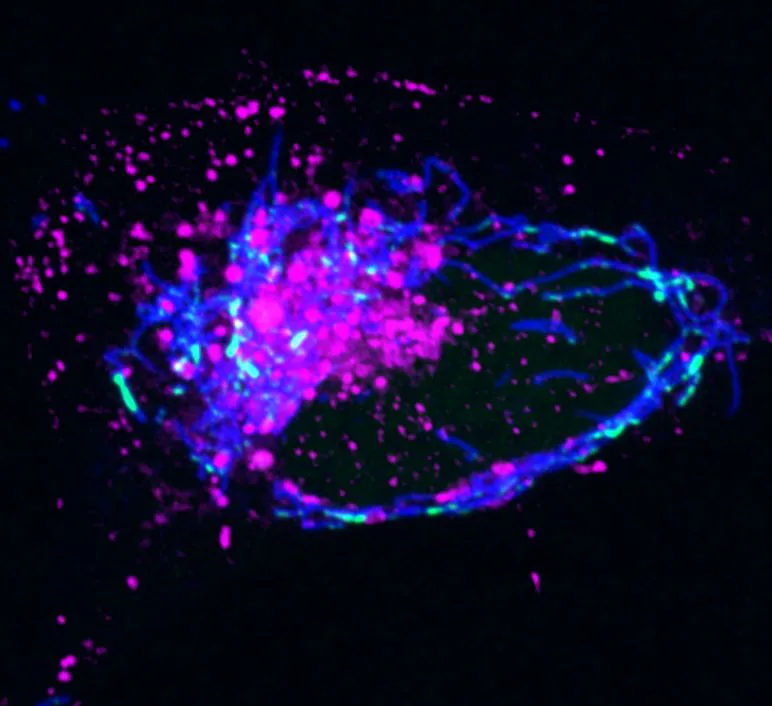
In what ways do you envision the research on mitochondrial DNA contributing to the development of personalized treatments for inflammatory diseases?
Right now, we are working to understand all of the fine cellular details regarding how mtDNA can escape from mitochondria, which is what enables it to trigger inflammation, and hopefully allow us to design drugs to block its release.
Once we have a complete picture of how that works, it will be important for us to understand how these events play out in the body – for example, are there differences between mtDNA-mediated inflammation in different cells and tissues, or in different inflammatory diseases? And if we are able to block mtDNA-mediated inflammation, does that improve the symptoms of inflammatory diseases? If we can get a handle on these details, that will hopefully help us to design better treatments for inflammatory diseases for the future.
Is it fair to compare our ability to describe the world of cellular communities to looking into a room through the keyhole?
I don’t think so – looking through a keyhole implies that we can see cells exactly how they are, but we usually have to alter cells in some way to study them (e.g., chemically preserve them, make organelles fluorescent so that we can take a picture, etc.).
To me, it has always felt like putting together a puzzle, except that you have to hunt for the pieces, and you don’t know what the big picture looks like until you have enough pieces put together for a pattern to emerge. To me, putting together the puzzle is what makes scientific research fun.
What are your other interests besides cell biology … reading, painting, gardening, skiing maybe?
I enjoy fermenting things – homemade beer, kombucha, etc. I also generally like being outside and enjoy biking, hiking, and gardening. I recently moved to Charlottesville, Virginia, to start my own research lab at the University of Virginia, so I am excited to explore everything that my new hometown has to offer: hiking in the Shenandoah National Park, wine tasting, US history, art museums, etc.
Someone comes up to you and says, “I wanna be just like you. I want to be a Cell Biologist”, what advice would you give?
Don’t be afraid to ask questions, and don’t be afraid to rely upon mentors when you need support (make sure to find good mentors!).
Take care of your health (both physical and mental), and be sure to ask for help if you are feeling overwhelmed. Hold onto that child-like wonder and awe about learning about science – that will fuel you to keep going. Get comfortable with the feeling that you don’t know anything – make friends with that feeling of doubt and use it to guide to help you improve.
A growth mindset is vital – if you don’t succeed now, that doesn’t mean you won’t in the future. Failure doesn’t mean that you’re not worthy, rather it’s a necessary step in the process of improving yourself. Last but not least, learn to fully utilize the scientific method, as it is an extremely powerful tool for solving problems and understanding the world around you.
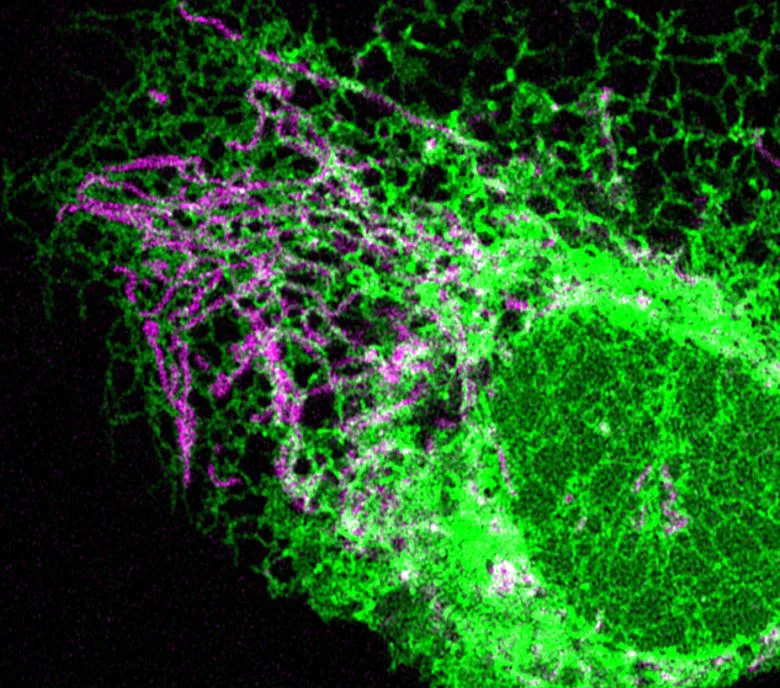
Quick bits:
What is your favourite movie quote?
“All you have to decide is what to do with the time that is given to you.” -Gandalf, The Fellowship of the Ring
If you were a superhero what would your powers be?
Regeneration/rapid healing
What would you do on Mars for fun?
Stargazing
What books should I read in 2024?
I am trying to get back into reading, so I could use some suggestions! The last book I read that I loved was Circe, and I am currently enjoying Lessons in Chemistry.
(Wow! Thank you, Dr. Newman, for an incredibly inspiring conversation! Your work is a true source of inspiration. We eagerly anticipate our next visit to witness more of your innovative research. Until then, we extend our best wishes for your continued success in all your future endeavors.)

